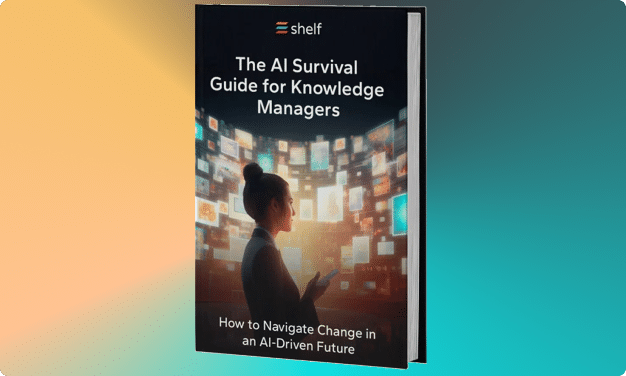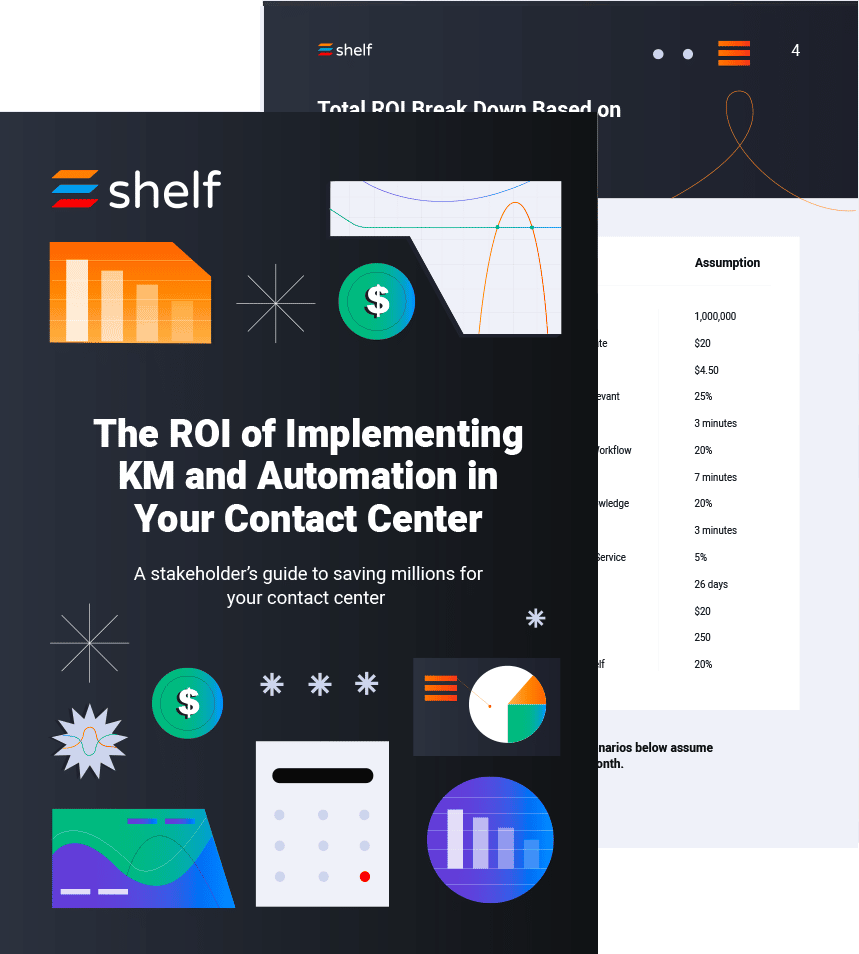As a B2C retailer, busy season is an important time; customers continue doing business if they have a good experience—in fact, 65 percent of a retailer’s profits come from repeat shoppers. Repeat shoppers depend on timely answers; timely answers require great knowledge. Most people would rather self-serve if they can help it, but when customers pick up the phone, are you agents prepared?
Unfortunately, far too many brands struggle to provide excellent customer service because their knowledge base or knowledge management system can’t keep up. It’s not that agents don’t care, many just simply can’t find what they need quickly.
If your agents struggle to quickly find answers because they either don’t know where to look, or can’t trust what they find—it may be time to step back and perform a quick knowledge management assessment before your busy season.
5 knowledge management tips for e-commerce and retail brands
To keep your entire customer support team ready, below are five knowledge management optimization tips to ensure your customers receive great answers anywhere, anytime, and in the shortest amount of time possible.
Tip: Regardless of how sloppy or undocumented your company’s knowledge process, find a source of truth for knowledge.
Even though you may find out later your knowledge base isn’t ideal, you won’t force agents to look in multiple locations to find information—one of the biggest barriers to reducing time on call or time on hold metrics.
1. Integrate knowledge into your contact center
The reason you want to have a source of truth for knowledge: the fewer tabs agents must open while speaking with a customer, the better. Besides, SharePoint sites or internal project management tools are commonly out of date and require another open tab.
No matter the contact center or support software you use, your knowledge solution should ideally be integrated into this environment. Check out our list of different types of knowledge management tools to learn why #7 on the list—the knowledge management platform—is the ideal way to integrate knowledge into an agent environment.
In addition to integrating knowledge, another best practice is to ensure long form articles or documents are in a convenient format for agents.
Instead of only using cards or articles to store knowledge, consider converting knowledge into FAQs, even decision trees if you can. For busy agents, the right content in the best format possible can save a ton of time.
2. Evaluate your knowledge management stack
Knowledge bases or knowledge management software purchased ten years ago—or even a year ago—probably aren’t helping your customer service agents if these solutions were not designed according to knowledge management best practices.
Knowledge management in the modern era must make sense of big data, automate reporting, and integrate knowledge into the contact center and other places you serve customers. Legacy solutions like SharePoint and many other products
Take a step back to assess where exactly agents get the documents they commonly reference. Are people using several knowledge sources and finding incorrect information? Are your documents written in long-form when FAQs would be better? Are you using tags appropriately to organize information?
Consider doing a full audit of your knowledge management stack so you’ll have a better idea of what’s working, what’s not working, and what technology you need to replace.
3. Meet with your knowledge management team
Before the busy season emerges, take a minute to assess who owns knowledge management and how agents interact with your knowledge management team. As we covered in our post on knowledge management team roles and responsibilities, your agents and customers play an important role on your knowledge management team.
If you don’t have a good way for agents to relay feedback from customers to your knowledge team, knowledge can grow irrelevant quickly. Nothing is worse for agents than providing wrong answers, or scrambling to find information.
Studies show 74% of people in customer-facing positions are stressed out and at risk of burnout—your knowledge management team should absolutely incorporate agent feedback into their continent maintenance workflows.
If the process of updating wikis in your knowledge base is sloppy or nonexistent, meet with your company’s KM and operations team to create a process that will ensure feedback gets incorporated.
A recent report from Zendesk indicated 69% of customers will try to find answers to their questions before contacting a help desk; without a functioning knowledge management team, don’t expect information they come across to always be accurate.
4. Announce changes to agents
As a customer, there’s nothing more frustrating than contacting a customer service agent about a problem with a sale only to find out that the agent is unaware of it.
Unfortunately, when you increase your staff to keep up with the busy season, it’s common to have part-time workers in and out of the office that may not be familiar with all the knowledge seasoned customer service agents have accumulated over the years.
No matter how large or small your retail business, you should have a process to announce important policy updates or sales promotions to agents on the front lines.
Knowledge management software should do more than store knowledge—it should ideally be integrated in applications agents use every day to interact with customers. Knowledge management platforms like Shelf can send pop-up announcements to agents whenever an important update needs to be seen and acknowledged.
Even if your organization is graduating from a simple knowledge base to enterprise knowledge management software, take time to review exactly how you relay important announcements to your customer support team.
5. Identify gaps in knowledge
Especially in retail, your customers (as well as inexperienced customer service agents) won’t always know the answer to a question after digging through a knowledge base or self-help portal. Seeking supervisor help increases call time, and even supervisors may not have information on a specific return policy or warranty terms.
You increase the chances agents and customers will find what they need if you can identify gaps in your company’s base of knowledge. So how can you identify these gaps?
While agents can self-report FAQs they can’t find the answer to, it’s much more efficient to use a knowledge management platform that can report on empty searches and produce content recommendations automatically.
By closing gaps in your knowledge, you can not only improve handle times for agents, you deflect call volume since customers can find what they need without picking up the phone. As always, integrate all your knowledge into one source of truth and make it available omnichannel.
Tackle knowledge management before busy season
Busy season is a great thing as a retailer—but you can’t afford to rely on a knowledge management process that doesn’t lead to great answers.
Instead of telling your employees to buckle up for a difficult couple of months, improve your knowledge management stack, to make it easier for people to find the answers they need, when they need them.
Your company’s knowledge management infrastructure is one of the most impactful—yet often overlooked—keys to delivering a great customer experience. At the end of the day, customer service requires great support; great support depends on great knowledge.
To stay prepared, review a few key knowledge management best practices and explore adding knowledge management automation to your contact center this year.





